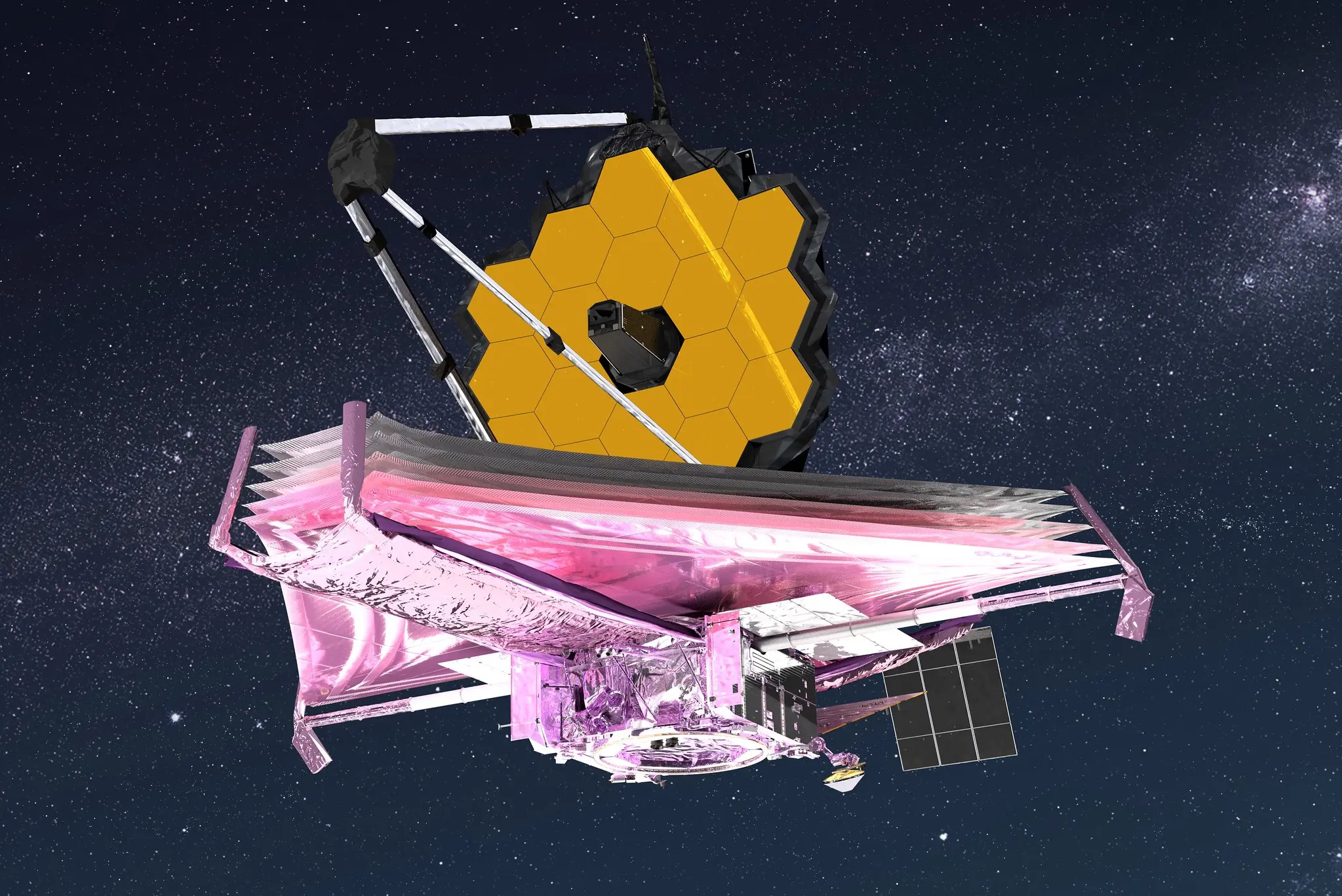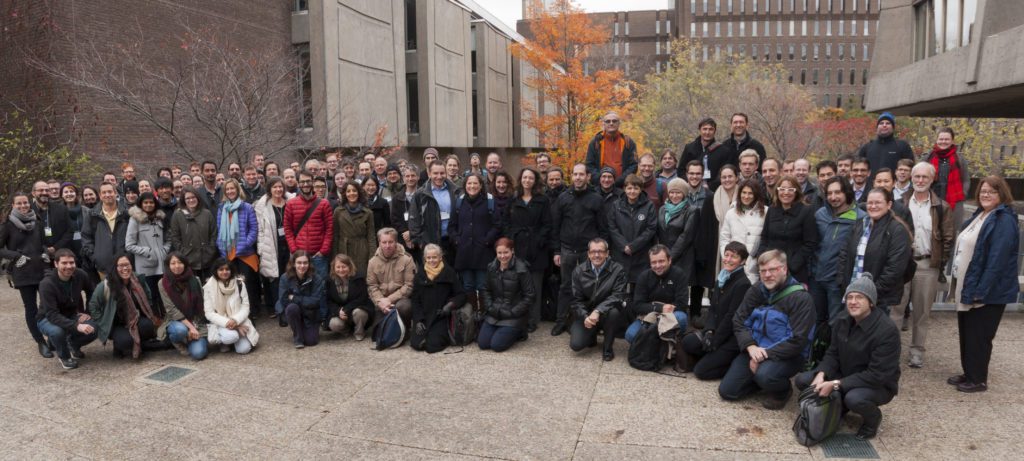Astronomers from all four corners of the globe meet in Montréal for a JWST conference

The second edition of the “Exploring the Universe with JWST” conference took place the week of October 24-28, 2016. Around a hundred international researchers gathered at the Université de Montréal to discuss the science programs of the James Webb Space Telescope (JWST). This infrared-optimized telescope, often referred to as the successor to the Hubble Space Telescope, will be a real revolution in astronomy.

A group photo of participants at the JWST conference held at the Université de Montréal in 2016. Credit: O. Hernandez
A review of the telescope’s progress was first given by Jonathan Gardner of NASA’s Goddard Space Flight Center. René Doyon, Director of the Observatoire du Mont-Mégantic (OMM), iREx and principal investigator of one of the telescope’s instruments, confirmed, “The launch should take place as planned in October 2018 in Kourou, French Guiana.”
The researchers present discussed the many scientific questions that will be able to be studied thanks to JWST’s four instruments in diverse fields such as cosmology, the study of galaxies, the solar system, star formation, star populations and exoplanets.
The iREx, which organized the conference in collaboration with the OMM, with the support of the Centre de recherche en astrophysique du Québec, had several participants. David Lafrenière, professor at iREx, presented the Canadian instrument on behalf of the team led by René Doyon. The scientific community has high hopes for this instrument, called NIRISS, for “Near-Infrared Imager and Slitless Spectrograph”. NIRISS will be able to decompose starlight passing through the atmosphere of a transiting exoplanet to study its chemical composition.
“This is the first opportunity we’ll have to detect gases in the atmosphere of a terrestrial exoplanet. It’s possible that we’ll be able to identify molecules that, on Earth, are generated in large quantities by life, such as oxygen or methane. The debate will then be open as to whether these molecules were created by life on these planets”, explains Loïc Albert, an iREx and OMM scientist working on NIRISS.
The teams designing the instruments receive several hundred hours of guaranteed observation time with the telescope. The conference was therefore an excellent opportunity for them to share their ideas with the scientific community, in order to determine the best targets to be observed during this guaranteed time.
Wednesday evening also saw a public lecture by David Charbonneau. A professor at Harvard University, he was the first to detect an exoplanet using the transit method in 1999. At this lecture, organized jointly with the Canadian Space Agency and AstroMcGill, and attended by some 500 people, Dr. Charbonneau attempted to answer the question “How do we find an inhabited planet?”
The science conference concluded with a presentation by Garth Illingworth, professor at the University of California at Santa Cruz and spokesman for the committee tasked with optimizing JWST’s scientific performance.
“This tool, which has an expected lifetime of between 5 and 10 years, represents a considerable investment. Conferences such as these enable the scientific community to prepare itself, so as to exploit its capabilities to the full,” sums up René Doyon.
The first edition of the conference was held in the Netherlands in October 2015. The James Webb Space Telescope is an international collaboration between the American (NASA), European (ESA) and Canadian (CSA) space agencies.
